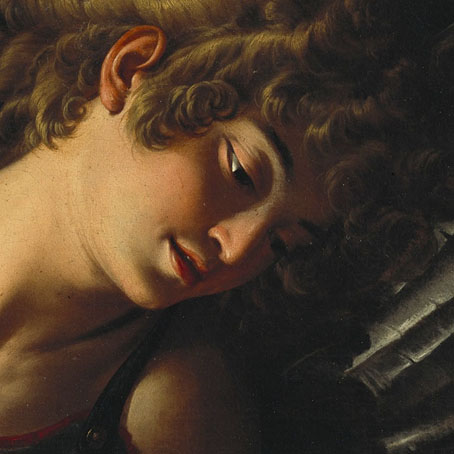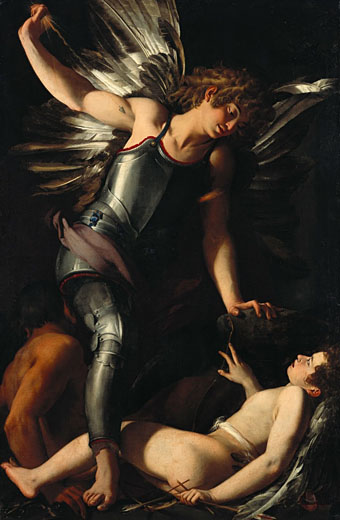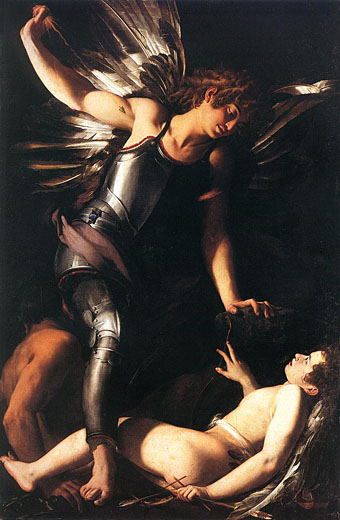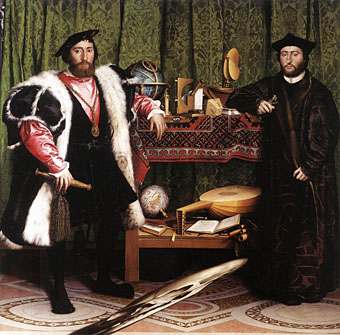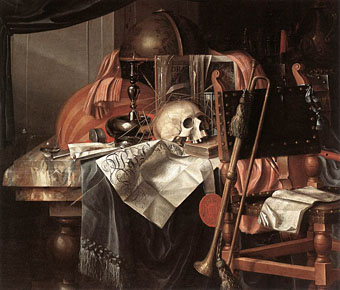Another favourite painting receiving the Google Art Project high-res treatment. Giovanni Baglione’s picture (also known as Sacred Love versus Profane Love) was painted circa 1602 as a riposte to Caravaggio’s provocative Amor Vincit Omnia. Where Caravaggio showed Eros triumphing over worldly concerns Baglione gives us an image of religious propaganda which displeased the older artist. Salt was rubbed in the wounds when Baglione produced a second (and lesser) version which puts Caravaggio’s features on the figure of the Devil. There’s an irony in this spat in the way that Baglione’s noble aspiration is subverted by erotic tension, the victorious angel shown happily astride a vulnerable and capitulating youth. If someone had pointed this out to Caravaggio he might not have felt so aggrieved.
Both Amor Vincit Omnia and The Divine Eros Defeats the Earthly Eros are part of the Old Master collection at the Gemäldegalerie, Berlin, where they can be viewed side by side.
Previously on { feuilleton }
• Chiaroscuro
• Angels 1: The Angel of History and sensual metaphysics

